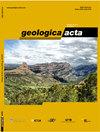First evidence of paleoearthquakes along the Carboneras Fault Zone (SE Iberian Peninsula): Los Trances site
IF 2
4区 地球科学
Q2 GEOLOGY
引用次数: 10
Abstract
Seismogenic faults that have not produced historical large earthquakes remain unnoticed and, thus, are dangerously left out from seismic hazard analyses. The seismogenic nature of the Carboneras Fault Zone, a left-lateral strikeslip fault in the Eastern Betic Shear Zone (southeastern Spain), has not been fully explored to date in spite of having a morphological expression equivalent to the Alhama de Murcia Fault, a seismogenic fault in the same tectonic system. This study provides the first paleoseismic evidence of the seismogenic nature of the CarbonerasFault Zone, based on the analysis of 3 trenches at Los Trances site, on the northwestern edge of the La Serrata Range. Cross cutting relationships and numerical dating, based on radiocarbon, thermoluminescence and U-series, reveal a minimum of 4 paleoearthquakes: Paleoearthquake1 (the oldest) and Paleoearthquake2 took place after 133ka, Paleoearthquake3 occurred between 83–73ka and Paleoearthquake4 happened after 42.5ka (probably after 30.8ka), resulting in a maximum possible average recurrence of 33ka. This value, based on a minimum amount of paleoearthquakes, is probably overestimated, as it does not scale well with published slip-rates derived from offset channels or GPS geodetical data. The characterization of this fault as seismogenic, implies that it should be considered in the seismic hazard analyses of the SE Iberian Peninsula.Carboneras断层带(伊比利亚半岛东南部)古地震的第一个证据:Los Transes遗址
没有产生历史大地震的地震断层仍然没有被注意到,因此,被危险地排除在地震危险性分析之外。Carboneras断层带是东贝蒂奇剪切带(西班牙东南部)的一条左旋走滑断层,尽管其形态表现与同一构造系统中的发震断层Alhama de Murcia断层相当,但迄今为止尚未充分探索其发震性质。这项研究基于对La Serrata山脉西北边缘Los Trance遗址3条海沟的分析,首次提供了Carboneras断层带发震性质的古地震证据。基于放射性碳、热释光和U系列的交叉关系和数值测年揭示了至少4次古地震:古地震1(最古老的)和古地震2发生在133ka之后,古地震3发生在83-73ka之间,古地震4发生在42.5ka之后(可能在30.8ka之后),导致最大可能的平均重现期为33ka。这个值基于最少量的古地震,可能被高估了,因为它与从偏移通道或GPS地球测量数据中得出的已公布的滑动率没有很好的比例关系。将该断层定性为发震断层,意味着在伊比利亚半岛东南部的地震危险性分析中应考虑该断层。
本文章由计算机程序翻译,如有差异,请以英文原文为准。
求助全文
约1分钟内获得全文
求助全文
来源期刊

Geologica Acta
地学-地质学
CiteScore
2.50
自引率
6.70%
发文量
13
审稿时长
>12 weeks
期刊介绍:
- Relevant conceptual developments in any area of the Earth Sciences.
- Studies presenting regional synthesis.
- Thematic issues or monographic volumes presenting the results from one or more research groups.
- Short papers reflecting interesting results or works in progress.
- Contributions and results from Research Projects, Workshops, Symposiums, Congresses and any relevant scientific activity related to Earth Sciences.
- Geologica Acta aims to stimulate rapid diffusion of results and efficient exchange of ideas between the widespread communities of Earth Science researchers (with special emphasis on Latinamerica, the Caribbean, Europe, the Mediterranean
 求助内容:
求助内容: 应助结果提醒方式:
应助结果提醒方式:


